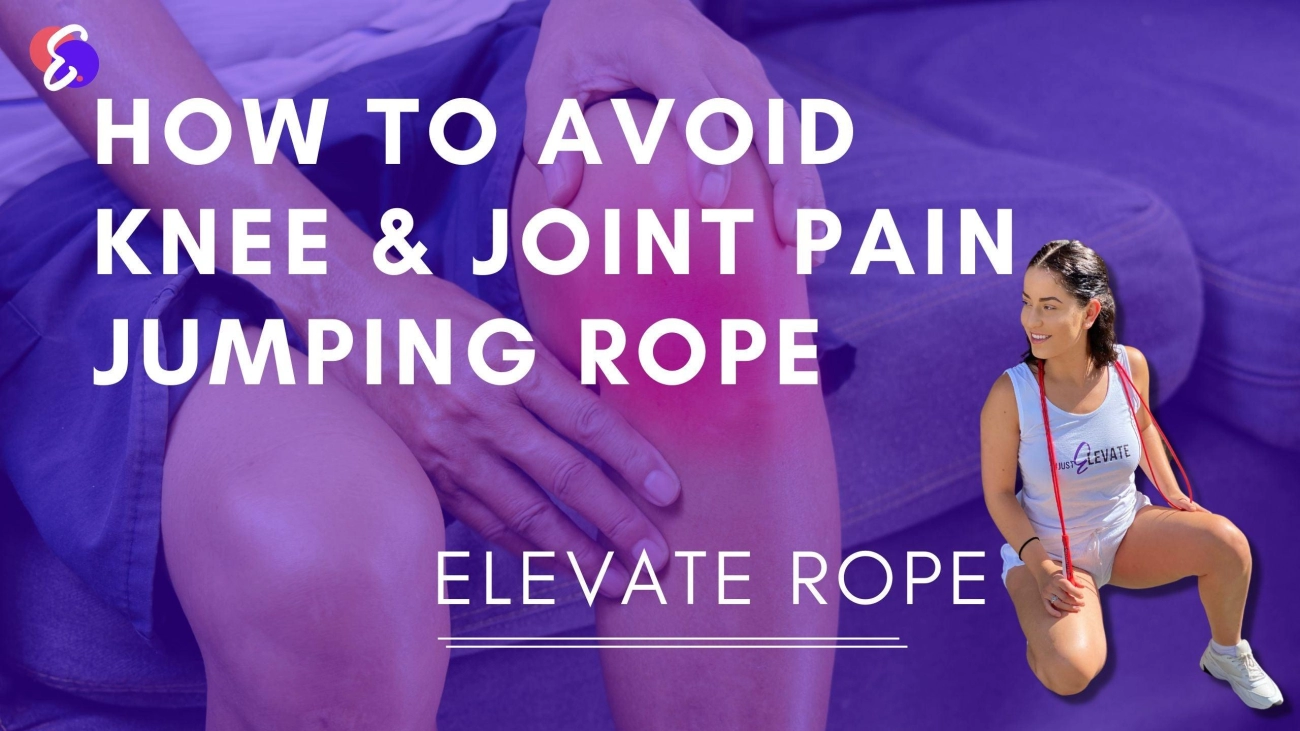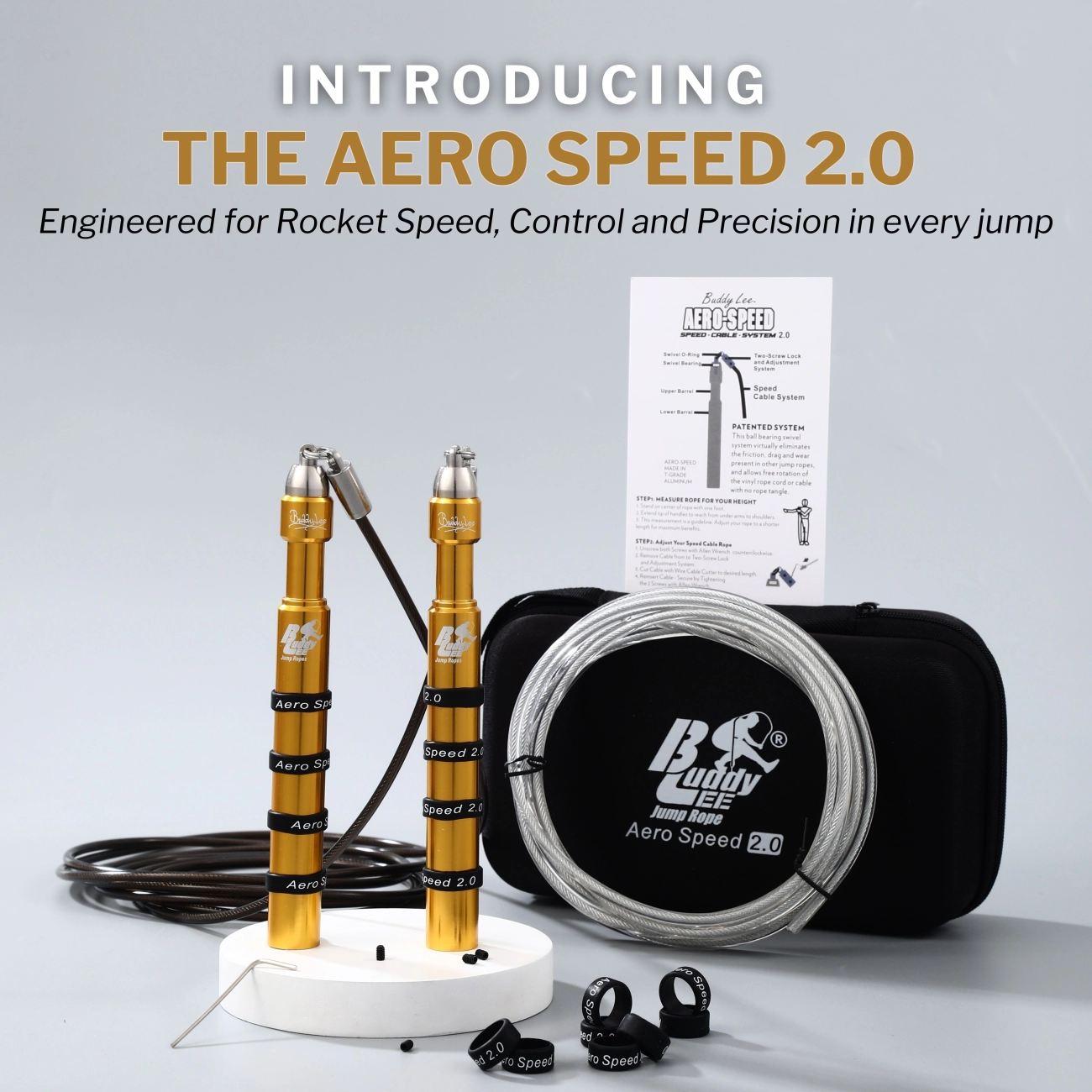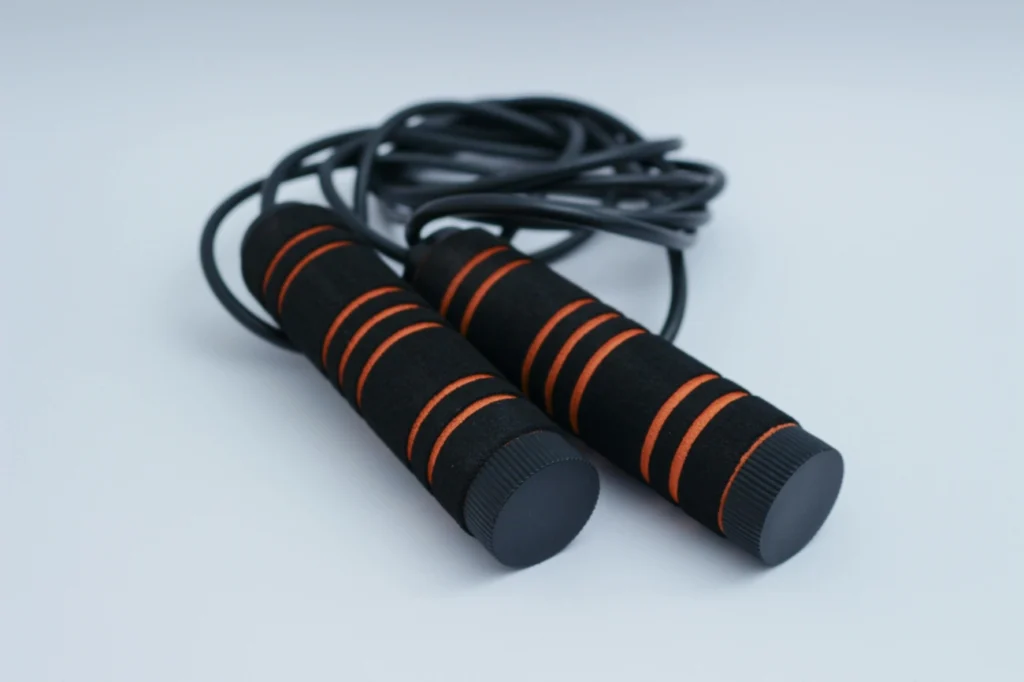Knee Pain From Jumping Rope
If you’re wondering why jumping rope causes knee pain, it helps to understand the basics of how your knee works and what jumping does to it.
Knee Anatomy Relevant to Jumping Rope
Your knee is a complex joint made up of bones, ligaments, tendons, and cartilage that all work together to support movement and absorb impact.
- Bones: The femur (thigh bone), tibia (shin bone), and patella (kneecap) form the knee joint.
- Ligaments: These connect bones and stabilize the knee. The anterior cruciate ligament (ACL) and medial collateral ligament (MCL) are especially important during movements like jumping.
- Cartilage: This smooth, rubbery tissue cushions the bones, reducing friction and absorbing shock.
- Tendons: Tendons connect muscles to bones. The patellar tendon links the kneecap to the shinbone and undergoes a lot of stress during jumping.
How Jumping Rope Impacts the Knees
Jumping rope involves repetitive impact with each landing. This constant stress can strain ligaments, tendons, and cartilage, especially if your form or technique isn’t ideal.
- Each landing generates force that your knee must absorb and control.
- Over time, this repeated force can cause irritation or inflammation of knee tissues.
- Ligaments and tendons bear much of this strain, making them susceptible to overuse injuries.
Common Types of Knee Pain Related to Jumping Rope
If you experience knee pain after jumping rope, it could be related to common conditions caused or worsened by repetitive jumping:
- Patellar Tendinitis: Also called jumper’s knee, this condition inflames the tendon connecting your kneecap to your shinbone. It’s common in jumpers and causes pain right below the kneecap.
- Runner’s Knee (Patellofemoral Pain Syndrome): This causes pain around or behind the kneecap, often from irritation due to poor tracking of the patella during repeated flexing and extending.
- Bursitis: Inflammation of the small fluid-filled sacs (bursae) that cushion your knee joint. Frequent high-impact jumping may trigger bursitis, causing localized swelling and discomfort.
Recognizing these issues early can help prevent long-term damage and keep your knee healthy while you enjoy jumping rope. Understanding the stress your knees endure is the first step toward sensible prevention and relief.
Common Causes of Knee Pain When Jumping Rope
Jumping rope is great for fitness, but if your knees start hurting, the cause is often related to a few key issues. Understanding these can help you avoid knee pain and keep your workouts safe.
Incorrect Jumping Technique and Hard Landings
One of the main reasons for knee pain during or after jumping rope is improper form. Landing too hard, with stiff or locked knees, puts a lot of stress on the knee joints and ligaments. Instead, you should aim for:
- Soft landings with knees slightly bent
- Landing on the midfoot rather than heels or toes
- Maintaining a steady, controlled rhythm
Poor technique causes repeated impact strain that wears down your cartilage and tendons, leading to issues like patellar tendinitis and runner’s knee.
Poor Footwear and Surface Impact
Your shoes and jumping surface are crucial for knee health. Wearing unsupportive or worn-out shoes increases shock to your knees. Similarly, jumping on hard surfaces like concrete adds impact strain. To protect your knees:
- Use cushioned, supportive sneakers designed for impact activities
- Jump on soft, forgiving surfaces such as gym mats or wooden floors
Avoiding hard surfaces helps reduce the jarring effect on your joints and lessen knee pain after your jump rope workouts.
Overuse and Lack of Recovery Time
Jump rope workouts are intense and repetitive. Without enough rest between sessions, your knees don’t get time to heal from the micro-tears caused by impact. This overuse can develop into chronic knee pain. To prevent this:
- Limit jump rope sessions to appropriate duration for your fitness level
- Schedule rest days to allow knees to recover
- Listen to your body and stop if you feel persistent pain
Inadequate Warm-Up and Stretching
Jumping rope cold can shock your knees. Not warming up properly tightens your muscles and reduces joint flexibility, increasing injury risk. Make sure to:
- Warm up with light cardio like walking or gentle jogging
- Include dynamic stretches focusing on your calves, quads, hamstrings, and knees
- Stretch after your workout to improve flexibility and reduce stiffness
Pre-Existing Knee Conditions or Weaknesses
If you’ve had past knee injuries or suffer from issues like arthritis, your knees might be more sensitive to jumping rope. Weak muscles or imbalanced strength around the knee also increase injury risk. If this sounds like you:
- Consult a healthcare professional before starting
- Focus on strengthening exercises for knees and surrounding muscles
- Consider lower-impact alternatives or modified jump rope routines
Using Inappropriate or Low-Quality Jump Ropes
Believe it or not, your choice of jump rope affects knee comfort too. Ropes that are too heavy, too light, or poorly balanced can throw off your rhythm and cause awkward movements. This leads to instability and added stress on the knees. When choosing a jump rope:
- Pick one that fits your height and skill level
- Look for features like ergonomic handles and smooth rotation
- Avoid cheap, poorly made ropes that tangle or catch mid-jump
Getting a quality jump rope supports better form and reduces unnecessary knee strain.
By keeping an eye on these common causes—technique, gear, surface, rest, warm-up, pre-existing conditions, and equipment—you can handle and prevent knee pain when jumping rope. It’s all about working smarter, not harder, to keep your knees healthy and pain-free.
How to Prevent Knee Pain While Jumping Rope

Jumping rope is a fantastic workout, but preventing knee pain starts with the right approach. Here’s how to keep your knees healthy and avoid unnecessary strain.
Use Proper Jump Rope Technique and Form
One of the biggest causes of knee pain during jumping is poor technique. Follow these tips to jump safely:
- Keep your knees soft and slightly bent when you land to absorb impact.
- Land on the middle of your foot (midfoot), not on your heels or toes, to reduce stress on your knee joints.
- Avoid locking your knees—keep them relaxed and flexible throughout your jumps.
- Maintain a steady rhythm, jumping just high enough to clear the rope without over-jumping.
Mastering good form is key; it prevents excessive repetitive strain on ligaments and tendons, reducing issues like patellar tendinitis or runner’s knee.
Choose the Right Jump Rope for Your Needs
The jump rope you pick can make a big difference in how your knees feel during and after workouts. Consider these factors:
- Weight: Beginners may benefit from lighter ropes to maintain control and avoid jerky movements.
- Length: Your rope should be the right length; too long or too short can affect your jump rhythm and knee alignment.
- Handle Grip: Choose handles that feel comfortable and offer good grip to avoid unnecessary wrist or arm tension.
For example, check out our selection of quality 5mm PVC jump ropes that balance durability and ease of use, perfect for helping reduce knee strain.
Wear Supportive Cushioned Footwear
Good shoes are your knees’ best friend. Here’s what to look for:
- Shoes with adequate cushioning to absorb shock.
- Solid arch and heel support to keep your foot stable.
- Proper fit to avoid slipping or foot sliding inside the shoe.
Skip the thin-soled sneakers or barefoot-style footwear when jumping rope to avoid harsh impact on your joints.
Jump on Ideal Surfaces
The surface underneath you plays a big role in knee health:
- Avoid jumping on hard concrete or asphalt, which can increase the impact load.
- Use gym mats, rubber floors, or wooden surfaces that provide some bounce and shock absorption.
- If you don’t have access to these, lay down a yoga mat or thick carpet as a temporary cushion.
Reducing surface impact helps prevent injuries and soreness after your jump rope sessions.
Warm-up and Cooldown Focused on Knee Health
Proper warm-up and cooldown routines prepare your knees for exercise and aid recovery:
- Spend 5-10 minutes warming up with light cardio like walking or ankle circles.
- Stretch your calves, hamstrings, quadriceps, and hips gently but thoroughly.
- Finish workouts with knee-friendly stretches to improve flexibility and blood flow.
These simple habits decrease stiffness and reduce the risk of overuse injuries.
Incorporate Knee-Strengthening Exercises
Stronger knees handle jumping much better. Include exercises that target:
- Quadriceps and hamstrings for balanced knee support.
- Hip stabilizers like glute bridges and side leg raises.
- Calf raises to reinforce lower leg muscles.
Consistency in these strengthening routines builds resilience, improving your jump rope performance and helping prevent knee pain or injury.
Combining proper form, the right gear, a suitable surface, and focused conditioning is your best defense against knee pain from jumping rope. For more tips on good jumping habits and routines, check out our guide on good skipping habits.
What to Do If You Experience Knee Pain from Jumping Rope

If you start feeling knee pain during or after jumping rope, it’s important to address it early to avoid worsening the issue. Here’s what you can do right away and how to adjust your routine for proper recovery.
Immediate Steps for Jump Rope Knee Pain Relief
- Rest – Stop jumping rope and give your knees a break. Avoid any high-impact movements that put extra stress on the joints.
- Ice – Apply ice to the painful area for 15-20 minutes every few hours. This helps reduce inflammation and soothe soreness.
- Compression – Use a knee sleeve or compression bandage to support the joint and reduce swelling.
- Elevation – Keep your knee elevated to minimize swelling further.
When to See a Healthcare Professional
If your knee pain persists for more than a few days despite rest or gets sharp and intense, consult a doctor or physical therapist right away. Also, seek medical advice if you notice:
- Swelling that worsens
- Difficulty bending or straightening the knee
- Instability or the knee giving out
- Severe pain during normal activities
Early diagnosis helps prevent long-term damage and ensures you get the right treatment.
Exercises and Stretches to Relieve Knee Pain and Improve Flexibility
Once acute pain settles, gentle movements can help you regain strength and flexibility:
- Quad sets – Tighten your thigh muscles while keeping your leg straight to build support.
- Hamstring stretches – Loosen the muscles behind your thigh to reduce knee strain.
- Calf stretches – Help improve ankle mobility for better shock absorption when landing.
- Straight leg raises – Strengthen muscles around your knee without bending the joint.
Keep exercises slow and stop if you feel pain. A physical therapist can guide proper rehab exercises tailored to your needs.
Modifications for Jump Rope Workouts During Recovery
While recovering from knee pain, you don’t have to quit jumping rope altogether—just adjust how you do it:
- Lower your jumping height to reduce impact.
- Jump on softer surfaces like gym mats instead of concrete.
- Focus on landing softly with bent knees and midfoot contact.
- Take more frequent breaks between sets.
- Use lighter or speed ropes to decrease strain.
- Gradually increase intensity as your knee improves.
Pay close attention to your body. If pain returns, stop and give your knees more time to heal.
By following these steps, you can safely manage knee pain from jumping rope and come back stronger, avoiding long-term injury.
How JumpRopeManufacturer Products Support Knee Health with Low Impact Jump Ropes

When jumping rope causes knee pain, the right gear can make a big difference. At JumpRopeManufacturer, we focus on designing specialized jump ropes that promote smooth, low-impact jumping to protect your knees and reduce strain.
Ergonomic Handles for Better Form and Reduced Knee Stress
Our jump ropes come with ergonomic handles that provide a comfortable, secure grip. This promotes proper wrist control and rhythm, which helps you maintain good posture and avoid stiff landings—two key factors in preventing knee pain from jumping rope.
Adjustable Lengths Tailored to Your Height and Skill Level
Choosing a jump rope that fits your height and skill matters a lot. JumpRopeManufacturer ropes are fully adjustable, so you can set the perfect length for your body. This helps you jump with confidence and prevents awkward jumps or overreaching that can put extra pressure on your knees.
Lightweight and Balanced for Smooth Jumps
Our ropes are made from lightweight PVC or beaded materials designed to move smoothly through the air. A balanced rope keeps your jump consistent, which means less jarring impact on your knees. Smooth rotations reduce abrupt landings, easing strain on joints, ligaments, and tendons.
Tips for Choosing JumpRopeManufacturer Ropes to Reduce Knee Pain
- Pick a jump rope with adjustable length to match your height and improve jumping efficiency.
- Look for ergonomic handles that reduce wrist tension and encourage a natural jumping rhythm.
- Choose lightweight materials like PVC or beaded ropes for a smoother, less stressful jump.
- Avoid heavy weighted ropes if you’re prone to knee pain, as these increase impact forces.
Using JumpRopeManufacturer products correctly will help you jump longer and safer, reducing the risk of knee pain caused by poor form or unsuitable equipment. For anyone in the U.S. looking to improve their jump rope workouts while protecting their knees, our ropes offer a reliable, low-impact solution.
FAQs About Jumping Rope and Knee Pain Relief
If you’re dealing with knee pain from jumping rope, you probably have a lot of questions. Let’s clear up some common concerns related to knee health and jump rope workouts.
Can Jumping Rope Worsen Knee Arthritis
Jumping rope can put stress on your knees, which may aggravate arthritis symptoms if you already have the condition. However, it’s not a straight “no-go.”
- Low-impact variations like jumping softly on the balls of your feet can reduce joint stress.
- Using proper form and supportive footwear is critical to avoid extra strain.
- Always consult your healthcare provider before jumping rope if you have arthritis.
Jumping rope won’t automatically worsen arthritis if done correctly, but listen to your body and stop if pain increases.
How Long Should I Rest If I Feel Knee Pain
If you notice knee pain after jumping rope, rest is essential to allow inflammation or strain to calm down.
- Typically, 48 to 72 hours of rest is recommended before resuming activity.
- During rest, apply ice and compression to reduce swelling if there’s any.
- If pain persists beyond a week or worsens, see a healthcare professional.
You can modify your routine with lower-impact exercises during your recovery period.
Are Weighted Ropes Bad for Knees
Weighted jump ropes add resistance and intensity, which can stress your knees more than lighter ropes.
- Beginners or those with knee weaknesses should avoid weighted ropes until they build up strength.
- If you use weighted ropes, make sure your form is perfect and start with short sessions.
- Weighted ropes are better for advanced users who have strong knees and good technique.
For safer options, consider lighter ropes like our PVC Plastic Skipping Rope, which offer smoother, low-impact performance.
How to Gradually Increase Jump Rope Intensity Safely
To protect your knees while improving your jump rope skills, increase intensity slowly and cautiously.
- Start with short sessions, 5 to 10 minutes, focusing on technique.
- Increase jump duration by 10-15% each week to avoid overuse injuries.
- Use proper warm-up and stretching to prepare your knees.
- Incorporate knee-strengthening exercises and rest days to promote recovery.
- Choose jump ropes with the right weight and length to avoid improper landing mechanics. You can learn more about sizing in our guide on how long should a jump rope be.
Following these tips helps you build endurance without adding unnecessary strain to your knees.
Jumping rope is a fantastic workout but protecting your knees is key. Using the right gear, adapting your technique, and listening to your body go a long way in staying pain-free and injury-resistant. If you’re ever unsure, check out our range of ergonomic jump ropes designed to support smooth, knee-friendly workouts at Jump Rope Manufacturer shop.



